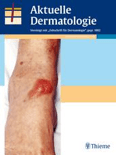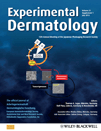
BRITISH JOURNAL OF DERMATOLOGY
Scope & Guideline
Transforming skin health with groundbreaking studies.
Introduction
Aims and Scopes
- Clinical Dermatology:
Focuses on the diagnosis, treatment, and management of various skin conditions, including atopic dermatitis, psoriasis, and hidradenitis suppurativa. Emphasizes real-world studies and clinical trials. - Dermatopathology:
Investigates the histopathological features of skin diseases, enhancing understanding of disease mechanisms and aiding in the development of diagnostic criteria. - Cosmetic Dermatology:
Explores interventions for aesthetic concerns, including the effects of treatments on skin appearance and the psychological implications of skin diseases. - Psychodermatology:
Examines the intersection of dermatology and psychology, focusing on how skin diseases impact mental health and quality of life. - Public Health and Epidemiology:
Studies the prevalence, risk factors, and societal impacts of skin diseases, contributing to better public health strategies and awareness. - Innovative Therapies and Technologies:
Covers advancements in treatment modalities, including biologics, gene therapy, and the use of artificial intelligence in dermatology. - Global Health and Equity:
Addresses disparities in skin disease treatment and outcomes across different populations, focusing on inclusivity and equitable healthcare access.
Trending and Emerging
- Personalized Medicine in Dermatology:
Research is increasingly focusing on tailored treatment approaches based on genetic, environmental, and lifestyle factors affecting individual responses to therapies. - Digital Health and Teledermatology:
With the COVID-19 pandemic accelerating the adoption of remote consultations, there is a growing trend in research on the efficacy, patient satisfaction, and implementation of teledermatology services. - Mental Health and Skin Disease:
There is heightened awareness and research on the psychological impact of skin conditions, with studies exploring the relationship between skin diseases and mental health issues such as anxiety and depression. - Artificial Intelligence in Dermatology:
The integration of AI technologies for diagnostic purposes and treatment optimization is becoming a prominent area of research, providing new tools for clinicians. - Health Disparities and Equity in Dermatology:
Emerging research is focused on understanding and addressing the disparities in skin disease prevalence and treatment outcomes among different ethnic and socioeconomic groups. - Innovations in Treatment Modalities:
There is an increasing focus on novel therapeutic interventions, including gene therapies and biologics, particularly for conditions like atopic dermatitis and psoriasis. - Environmental Impact on Skin Health:
Research is beginning to explore the effects of environmental factors, including pollution and climate change, on skin diseases, highlighting the need for awareness and preventive strategies.
Declining or Waning
- Traditional Pharmacotherapy:
With the rise of biologics and targeted therapies, there has been a noticeable decrease in research focused on traditional systemic treatments like methotrexate and ciclosporin for chronic skin conditions. - Dermatological Surgical Techniques:
While still relevant, the volume of papers focusing on traditional surgical techniques appears to have waned as interest grows in non-invasive and less invasive treatment options. - Basic Science Research:
There seems to be a reduced emphasis on purely basic science studies that do not link directly to clinical outcomes, as the journal increasingly prioritizes translational research. - Aging Skin Research:
Research specifically focused on aging skin, while important, has become less prominent as the field shifts towards targeted therapeutic approaches for specific conditions. - Chronic Inflammatory Skin Diseases:
The focus on chronic inflammatory conditions like eczema and psoriasis is being supplemented with emerging interests in rarer diseases and conditions such as hidradenitis suppurativa.
Similar Journals

AKTUELLE DERMATOLOGIE
Bridging Gaps in Dermatological Education and ResearchAKTUELLE DERMATOLOGIE is a distinguished journal in the field of Dermatology, published by GEORG THIEME VERLAG KG in Germany. With a commitment to advancing knowledge and practice in dermatological science, the journal has regularly featured research articles, reviews, and case studies since its inception in 1975 and continues to publish contributions through 2024. Despite being categorized in the lower quartile (Q4) of dermatology journals and holding a Scopus rank of #127 out of 142, it plays a pivotal role in disseminating valuable insights that support ongoing education and research in the discipline. The journal provides an essential platform for both seasoned professionals and budding researchers to share their findings, explore emerging trends, and discuss clinical practices, all while serving the needs of an evolving medical landscape. Access to its content may be restricted, but the journal remains a crucial reference for those invested in the future of dermatological research and patient care.

JOURNAL OF THE EUROPEAN ACADEMY OF DERMATOLOGY AND VENEREOLOGY
Driving Excellence in Dermatological and Venereal StudiesJOURNAL OF THE EUROPEAN ACADEMY OF DERMATOLOGY AND VENEREOLOGY, published by Wiley, is a premier peer-reviewed journal dedicated to advancing the fields of dermatology and venereology. Since its inception in 1991, this esteemed journal has established itself as a vital resource, providing a platform for innovative research and critical analysis in these important medical disciplines. With an impressive Impact Factor stemming from its Q1 category ranks in both dermatology and infectious diseases, it has achieved a dominant position, ranking #4 out of 142 in Dermatology and #37 out of 344 in Infectious Diseases according to Scopus. Researchers and clinicians alike are encouraged to engage with the rich content and robust discussions presented in its pages, fostering collaboration and cutting-edge advancements in patient care. Access options to this journal can be explored through Wiley, allowing for widespread dissemination and engagement in the academic community. The journal’s ongoing commitment to excellence ensures its relevance and significance in shaping the future of dermatological and venereological research.

EXPERIMENTAL DERMATOLOGY
Advancing the Science of Skin HealthEXPERIMENTAL DERMATOLOGY, published by WILEY, is a leading journal in the fields of Biochemistry and Dermatology, with impressive rankings including Q1 status in both categories as of 2023. With its ISSN 0906-6705 and E-ISSN 1600-0625, the journal offers a reputable platform for disseminating cutting-edge research and insights into skin biology and related health issues. As a pivotal resource for professionals, researchers, and students alike, EXPERIMENTAL DERMATOLOGY includes a broad scope of topics, fostering a deeper understanding of dermatological conditions and enhancing new therapeutic strategies. The journal’s distinguished performance is highlighted by its Scopus rankings, which place it at the 91st percentile in Medicine-Dermatology and the 65th in Biochemistry. While not an open-access publication, the journal remains committed to ensuring the accessibility of crucial developments within the dermatological community worldwide, facilitating the advancement of both clinical practice and academic inquiry.

AMERICAN JOURNAL OF CLINICAL DERMATOLOGY
Elevating Dermatological Research to New HeightsThe American Journal of Clinical Dermatology, published by Adis International Ltd, is a leading peer-reviewed journal dedicated to advancing the field of dermatology. With a notable impact factor and a prestigious Q1 rank in both Dermatology and Miscellaneous Medicine categories, this journal stands out as a valuable resource for researchers and clinicians alike, offering cutting-edge insights into clinical practice and innovative treatment strategies. Its comprehensive scope encompasses a broad range of topics within dermatology, addressing both common and rare conditions, with a focus on emerging therapies and technologies. As it converges its publication years from 2000 to 2024, the journal remains an essential platform for disseminating high-quality research to professionals striving to improve patient care and outcomes. With the ISSN 1175-0561 and E-ISSN 1179-1888, the American Journal of Clinical Dermatology facilitates greater accessibility to pivotal findings within the field, making it an indispensable resource for anyone involved in dermatological research and practice.

JOURNAL OF THE AMERICAN ACADEMY OF DERMATOLOGY
Bridging research and practice for dermatology professionals.JOURNAL OF THE AMERICAN ACADEMY OF DERMATOLOGY, published by Mosby-Elsevier, stands at the forefront of dermatological research and education. With an impressive impact factor and categorized as Q1 in Dermatology, this journal has established itself as a pivotal resource for healthcare professionals and researchers in the field. Since its inception in 1979, it has provided a platform for high-quality peer-reviewed articles, contributing significantly to advancements in dermatological science and practice through 2024. The journal commands an honorable position, ranking #8 out of 142 in the Scopus database's medicine dermatology category, placing it in the 94th percentile among its peers. Readers can access a wealth of cutting-edge studies, case reports, and reviews that address a broad spectrum of topics, from clinical dermatology to emerging therapies. In addition, the journal's commitment to excellence ensures it remains an essential tool for students, clinicians, and researchers dedicated to improving skin health and furthering knowledge in dermatology.

Acta Dermatovenerologica Croatica
Bridging Knowledge Gaps in Dermatology and VenereologyActa Dermatovenerologica Croatica is a premier journal dedicated to the fields of dermatology and venereology, published by the Croatian Dermatovenereological Society. Established in 1994, this journal has been a vital platform for disseminating research and advancements in the understanding and treatment of skin diseases and sexually transmitted infections. Although it is currently classified in the Q4 quartile for dermatology, infectious diseases, and miscellaneous medicine, it provides a unique opportunity for emerging researchers and seasoned professionals to contribute to a growing body of knowledge. Based in Zagreb, Croatia, the journal emphasizes free access to information that enhances clinical practices and scientific understanding among dermatologists and venereologists worldwide. As the journal approaches its 30th anniversary, it continues to aim for excellence in research quality, fostering collaboration, and innovating in the ever-evolving fields it represents.

Current Dermatology Reports
Transforming skin health insights into practice.Current Dermatology Reports is a distinguished journal published by SPRINGER that focuses on the latest advancements and research in the field of dermatology. With an ISSN of 2162-4933, this journal provides a vital platform for clinicians, researchers, and students to disseminate groundbreaking findings and emerging trends pertinent to skin health. Notably recognized within the Q2 category in Dermatology for 2023, it ranks 50th out of 142 journals in the Scopus database, placing it in the 65th percentile among its peers. This accessible journal, which has been converging scholarly contributions since its establishment in 2012, plays a crucial role in bridging the gap between clinical practice and research, thereby enhancing patient care and advancing scientific understanding of skin-related issues. The editorial team is committed to the rigorous peer-review process, ensuring high-quality publications that reflect the evolving landscape of dermatology. Researchers and healthcare professionals are invited to contribute and engage with content that pushes the boundaries of knowledge in this dynamic discipline.

DERMATOLOGIC CLINICS
Empowering Clinicians with Essential Dermatological ResearchDERMATOLOGIC CLINICS is a leading journal in the field of dermatology, published by W B SAUNDERS CO-ELSEVIER INC. Since its inception in 1983, the journal has consistently provided a platform for the dissemination of high-quality research and clinical insights, earning its place in the prestigious Q1 quartile for dermatology in 2023. With a Scopus ranking of #34 out of 142 in its category and a commendable 76th percentile, DERMATOLOGIC CLINICS remains essential reading for clinicians, researchers, and students alike. The journal features comprehensive reviews and original articles that address the latest advancements and challenges in dermatologic diagnostics and treatments. Though it does not offer Open Access, it is widely accessible ensuring a broad readership. With a commitment to advancing the understanding of skin disorders, DERMATOLOGIC CLINICS continues to uphold its legacy of excellence in dermatological scholarship.

Indian Journal of Dermatology Venereology & Leprology
Transforming Perspectives on Skin and Infectious HealthThe Indian Journal of Dermatology Venereology & Leprology (IJDL) is a premier open-access journal dedicated to the fields of dermatology, venereology, and leprology, published by SCIENTIFIC SCHOLAR LLC since 2004. With a rich historical background dating back to 1976, the journal has established itself as a reputable source for high-quality research and clinical advancements in these disciplines. The IJDL is recognized for its academic rigor, boasting a 2023 category quartile ranking of Q2 in Dermatology and Q3 in Infectious Diseases, indicating its significant contribution to these fields. With an accessible online platform, researchers, practitioners, and students alike can readily explore the latest studies, case reports, and reviews that address key issues affecting public health, particularly in India and beyond. The journal serves not only as a repository of valuable knowledge but also as a vital forum for the exchange of ideas, fostering collaboration and innovation among professionals dedicated to enhancing skin health and combating infectious diseases.

INTERNATIONAL JOURNAL OF DERMATOLOGY
Pioneering insights into skin diseases and treatments.The INTERNATIONAL JOURNAL OF DERMATOLOGY, published by WILEY, stands as a premier scholarly platform in the field of dermatology, with a notable impact factor that affirms its quality and renown. Established in 1963 and converging through to 2024, this journal is recognized as a Q1 category publication, ranking in the top 20% of journals within the dermatology field according to the Scopus ranking system, where it occupies the 28th position among 142 journals. This reflects its dedication to advancing the understanding and treatment of skin diseases, making it a vital resource for researchers, healthcare professionals, and medical students alike. Although it does not provide open access options, articles published in this journal cover a broad range of dermatological topics, ensuring that it serves as a comprehensive and authoritative source for cutting-edge research and clinical practices. With its rigorous peer-review process and commitment to high standards, the INTERNATIONAL JOURNAL OF DERMATOLOGY remains indispensable for those engaged in dermatological science and practice.